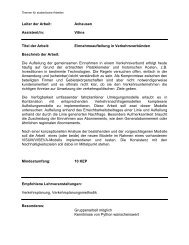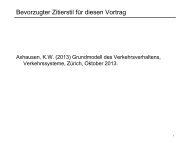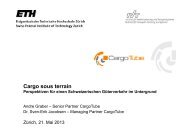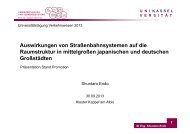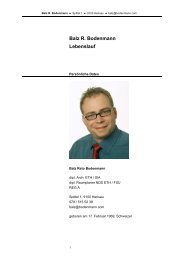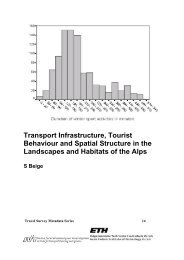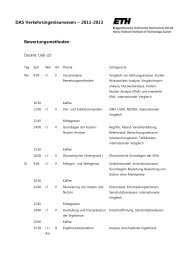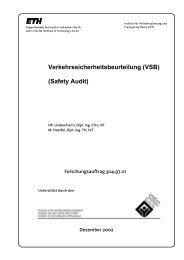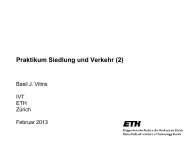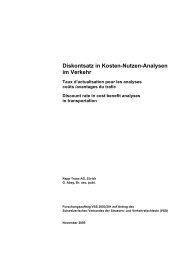A Tour-Based Model of Travel Mode Choice - Civil Engineering ...
A Tour-Based Model of Travel Mode Choice - Civil Engineering ...
A Tour-Based Model of Travel Mode Choice - Civil Engineering ...
Create successful ePaper yourself
Turn your PDF publications into a flip-book with our unique Google optimized e-Paper software.
10 th International Conference on <strong>Travel</strong> Behaviour Research<br />
August 10-15, 2003<br />
Ortúzar, J. de D. (1983) Nested Logit <strong><strong>Mode</strong>l</strong>s for Mixed-mode <strong>Travel</strong> in Urban Corridors,<br />
Transportation Research 17A (4), 283-299.<br />
Ortúzar, J. de D. and L. Willumsen (2001) <strong><strong>Mode</strong>l</strong>ling Transport, Chichester NY: Wiley.<br />
Train, K. (2002) Discrete <strong>Choice</strong> Methods with Simulation, Cambridge: Cambridge<br />
University Press, preprint available at http://else.berkeley.edu/books/train1201.pdf.<br />
Appendix A: Statistical Identification <strong>of</strong> <strong><strong>Mode</strong>l</strong> Parameters<br />
The procedure followed here is inspired by Bunch (1991) and Ben-Akiva, et al., (2001). It<br />
involves examining whether the model meets order, rank and positive definiteness conditions.<br />
Recall that the model error structure is:<br />
ε(m,t,p) = µ(m,p) + η(m,t,p)<br />
[A.1]<br />
where:<br />
µ(m,p) ≈ MVN(0,Σ)<br />
η(m,t,p)≈ N(0,σ)<br />
Two cases are considered:<br />
• a homoscedastic iid model, which has two parameters: one along the diagonal <strong>of</strong> the<br />
matrix Σ, and the term σ; and<br />
• a heteroscedastic, independent model, which has M+1 parameters: M diagonal elements<br />
in the matrix Σ (where M is the number <strong>of</strong> trip modes in the model) and the<br />
term σ.<br />
The order condition states that a maximum <strong>of</strong> M(M-1)/2 alternative-specific parameters are<br />
estimable in Σ. In this case, M = 3; thus, an upper bound on the number <strong>of</strong> estimable parameters<br />
in Σ is 3.<br />
The rank <strong>of</strong> Σ depends on its specification. In the iid case, the rank <strong>of</strong> the matrix is 1; in the<br />
heteroscedastic case, the rank is 3. The “rank” <strong>of</strong> σ, <strong>of</strong> course, is 1 for both models.<br />
The positive definiteness condition is not binding for this model due to its similarities with a<br />
multinomial probit model, for which any positive normalization is acceptable (Ben-Akiva, et<br />
al., 2001).<br />
Finally, the overall utility function U(m,t,p) (equation [1]) is only identified up to scale, resulting<br />
in a loss <strong>of</strong> one estimable parameter. Thus, the number <strong>of</strong> identifiable parameters in<br />
the model is the sum <strong>of</strong> the ranks <strong>of</strong> the two error terms, minus one, to account for the utility<br />
23



